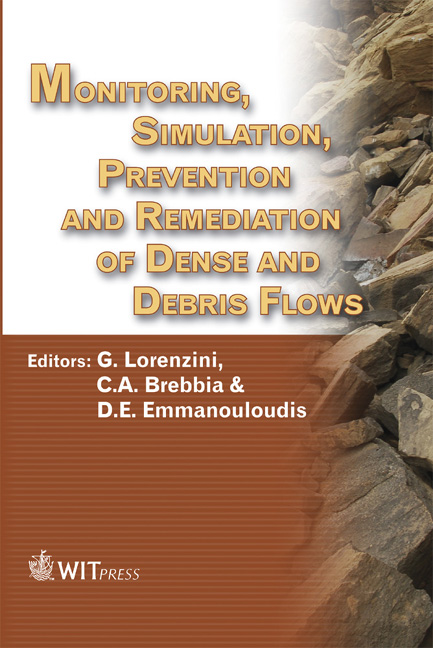Causes Of Debris Flow Formation In Flysch Area Of North Istria, Croatia
Price
Free (open access)
Transaction
Volume
90
Pages
10
Published
2006
Size
1,258 kb
Paper DOI
10.2495/DEB060271
Copyright
WIT Press
Author(s)
Ž. Arbanas, Č . Benac & V. Jurak
Abstract
The central and northern parts of the Istrian Peninsula situated in the northwestern part of the Croatian Adriatic coast are formed within the Paleogene flysch rock complex. The flysch zone in the northeastern part of the peninsula borders with the Ć i ć arija Mountain Range, which mostly consists of carbonate rocks. The occurrences of debris flows that cause huge damage to transport and other constructions are quite frequent. In this paper, we present the causes and triggering mechanisms of debris flows sporadically occurring in the Krbav č i ć i village area near the city of Buzet. The potentially unstable soil mass formed by the erosion of the flysch bedrock fills the narrow and long ravines cut into the flysch bedrock all the way to the limestone slopes of the Ć i ć arija Mountain Range. This paper describes in detail the occurrence of a particular debris flow along with its repetitive appearances in the period from the winter of 1979 until today. The debris flow mass damaged the road embankment and caused its downslope slide in the length of about 300 m in one night in the winter of 1979. The movement of the debris mass triggered in the ravine put into danger the bridge constructed over an old unstable zone in the winter of 2003, however fast intervention measures prevented the possible damage. Keywords: debris flow, landslide, flysch, triggering mechanism. 1 Introduction In the northern part of the Istrian Peninsula there is a clearly visible boundary between two geomorphological units, namely the hilly Paleogene flysch basin,
Keywords
debris flow, landslide, flysch, triggering mechanism.





